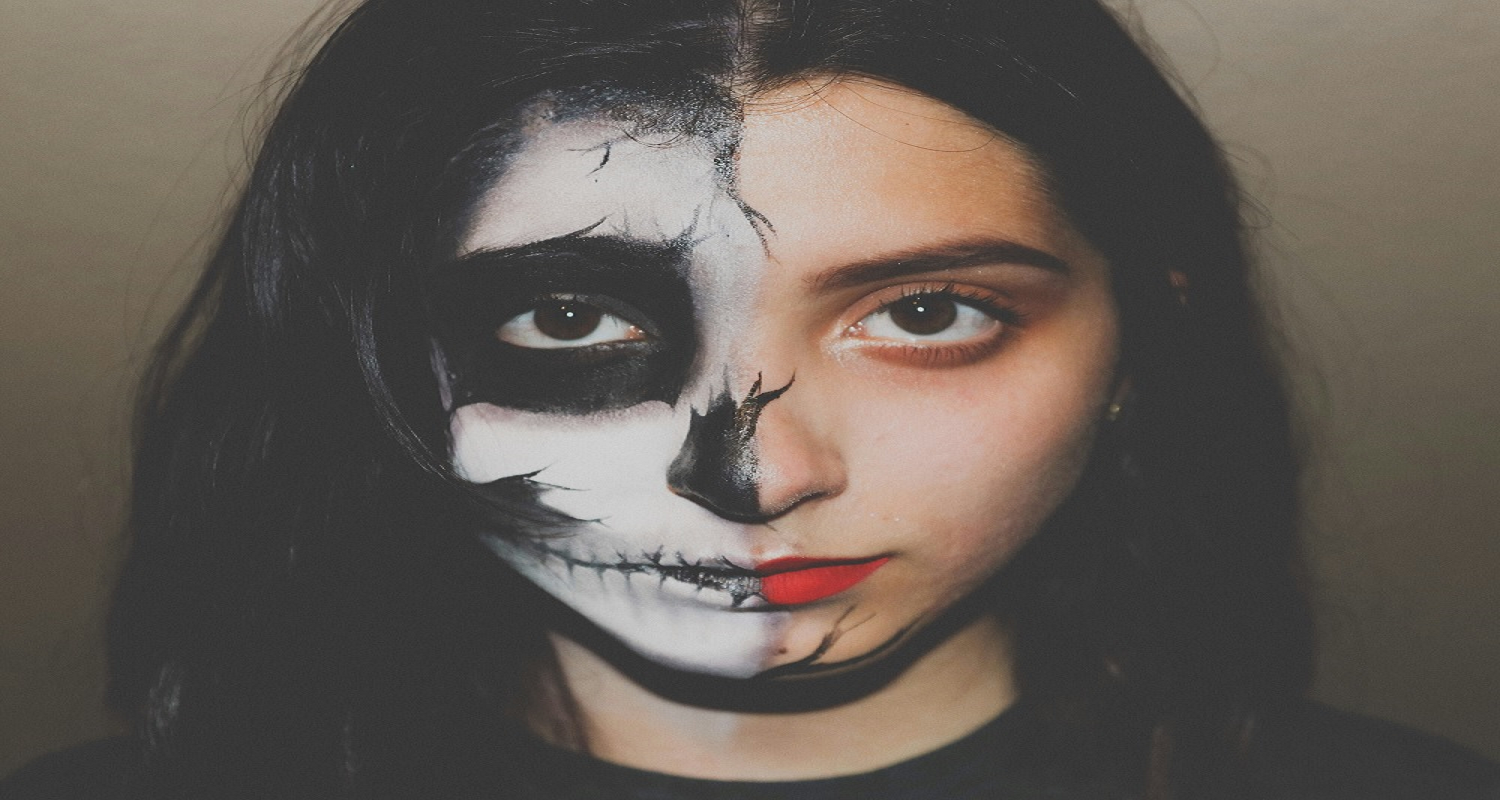With Halloween just around the corner, many of us are preparing spooky costumes and scary makeup looks. Stores are full of halloween costumes and makeup of various kinds and quality.
But what are our possibilities?
What’s behind all this stuff?
Could we harm our health or environment by using this kind of makeup?
If you are looking for spooky makeup you can use standard makeup, theatrical makeup or different kinds of face paint which you can find on the internet or in shops. In this article we are going to focus on face paint.

Source: unsplash.com
The scary quality of face paint
In e-shops like temu, shien, alibaba, aliexpress or amazon you find a lot of stuff without knowing the ingredients. They generally have much lower pigmentation, and many contain ingredients that aren’t suitable for cosmetics, which poses a safety risk to the individual being painted.
Many of them are not registered on CPNP (Cosmetic Products Notification Portal). This European portal is for the reporting of beauty products. It was created to implement regulation (EC) No. 1223/2009 on cosmetic products. Any cosmetic product that is placed on the market of any of the EU Member States must be registered in CPNP. The product is registered by the manufacturer or distributor of the product.[1] So if a product is missing in this portal, there is a big discussion about their safety.
GG tip: When we buy products online, there should at least always be clear information about the ingredients.
Guidelines for Using Face Paints
- Always check the label and adhere to the instructions. For instance, many face paints are not suitable for use around the eyes.
- Only use face paints and glitters specifically designed for that purpose, as even non-toxic craft paints can cause skin reactions. We should definitely avoid using craft paints such as Acrylic, Tempera and Oil paints. These paints are not designed to be used on the skin and should not be used as makeup. They can cause severe allergic reactions and even cause chemical burns.
- Avoid using face paints that have an unpleasant odor, even if they are new, as this may indicate bacterial growth in the product.
- Conduct a patch test before using face paint for the first time. Apply a small amount to the skin; if you experience irritation or a rash, do not proceed with use.
- Follow the removal instructions provided on the packaging.
- Do not leave face paint on overnight, as prolonged wear can lead to skin irritation.
- Keep face paints and cosmetics out of children’s reach. Even products labeled as non-toxic and natural can be harmful if ingested.
- If you have any doubts about the safety of a product, refrain from purchasing or using it. [2]

Source: pixabay.com
What about ingredients?
When it comes to face painting, safety is paramount. It’s essential to choose paints that are specifically labeled as cosmetic grade. There are two main types of face paint: water-based and oil-based.
Water-based paints are the preferred option for most face painters because they are easy to apply, dry quickly, and can be removed easily with soap and water. Additionally, they are less likely to irritate the skin, making them suitable for all ages.
In contrast, oil-based paints have their own benefits. They are more durable and better at resisting sweat and water, but they can be challenging to remove.
Here’s a comparison of some other, less common face paints:
- Glycerin-based paints are soft and flexible, making them ideal for base work as they remain pliable even when dry.
- Wax-based paints are excellent for line work, providing a sharper finish, but they can be less flexible and may crack if applied too heavily.
- Powder-based paints work well for base applications in hot and humid conditions, as they resist sweat and humidity better than wax and glycerin-based options, but are not suitable for line work.
- Alcohol-based paints are typically liquid and applied with an airbrush, sponge, or brush, and are designed to last much longer, often up to three days. [3]
For That Ghostly Glow
When it comes to Halloween makeup, there are two main types of glow-in-the-dark effects: fluorescent and luminescent.
Fluorescent colors are bright, neon-like colors that are visible in daylight. These colors are often used in eye-catching makeup looks. However, the FDA (U.S. Food and drug administration) has strict rules about where these colors can be used on the body. They cannot be applied near the eyes.
Luminescent colors glow in the dark. The FDA approved one luminescent color for cosmetic use in 2000, but it’s not intended for everyday use and should also be kept away from the eyes. [4]
It’s important to note that European regulations for cosmetic ingredients are stricter than those in the United States. This means that cosmetic products sold in Europe are generally considered safer.
Homemade Recipes for Face Paints
DIY face paints are becoming more popular, and many websites offer homemade recipes. You’ll find suggestions using common household ingredients such as toothpaste, lotion, cornstarch, food coloring, and other easily accessible items. Before using it, be careful about irritation on your skin, always test on a small part of your body. If you use some colours like beet juice be careful how temporary it would be and how long it will stay on your skin.
If you are looking for some more natural opportunities you can find some natural face paint or you can use standard natural cosmetic make up.
Halloween around the corner
As seasonal items in discount shops, we can find face and body paint. So, we decided to investigate this for you.

Source: CEEV Živica
What Did We Discover?
The adage “expensive means better” doesn’t always hold true. In cheap seasonal items like Halloween makeup, low prices often equate to low quality and subpar ingredients. A problematic aspect is the extraction of materials such as paraffin, mineral oil, ceresin wax, and synthetic colors, which are petroleum-based. Another issue could be glycerin, which can come from three sources:
- Plant-based: friendlier to skin and environment
- Animal origin: could raise ethical concerns in production
- Synthetic: derived from petroleum
Synthetic ingredients can be problematic for sensitive skin, especially in young children. When using face paint, you should prioritize quality—even at public events, you should inquire about ingredients.
The good news is that we don’t use face paint often, so it isn’t a significant concern for our health. However, it does have environmental implications.
Consider:
- The environmental impact of petroleum extraction.
- The unethical aspects of mica extraction or the use of animal-derived substances.
- The extensive logistics involved in delivering materials and products from various locations before purchase.
- The amount of unused products that end up in landfills.
- The waste generated from packaging, especially for Halloween makeup.
It’s a substantial footprint for something we use only once a year. We should find ways to minimize our environmental impact, and buying less is a good start. Consider creating your Halloween costume without relying on special face paint. Use makeup you already have or opt for a simple paper mask.


0 Comments